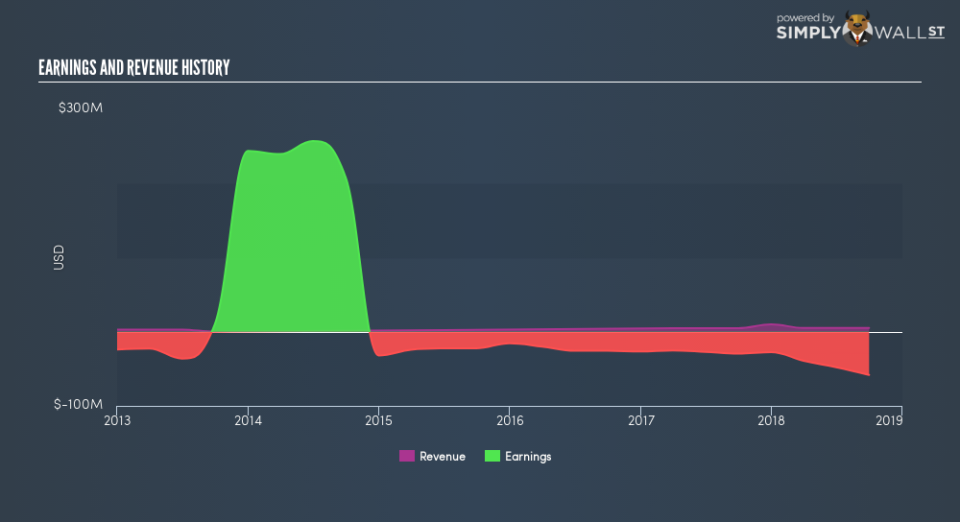CymaBay Therapeutics, Inc. (NASDAQ:CBAY): What Does Its Beta Value Mean For Your Portfolio?

Want to participate in a short research study? Help shape the future of investing tools and you could win a $250 gift card!
Anyone researching CymaBay Therapeutics, Inc. (NASDAQ:CBAY) might want to consider the historical volatility of the share price. Modern finance theory considers volatility to be a measure of risk, and there are two main types of price volatility. The first category is company specific volatility. This can be dealt with by limiting your exposure to any particular stock. The second type is the broader market volatility, which you cannot diversify away, since it arises from macroeconomic factors which directly affects all the stocks on the market.
Some stocks mimic the volatility of the market quite closely, while others demonstrate muted, exagerrated or uncorrelated price movements. Beta is a widely used metric to measure a stock’s exposure to market risk (volatility). Before we go on, it’s worth noting that Warren Buffett pointed out in his 2014 letter to shareholders that ‘volatility is far from synonymous with risk.’ Having said that, beta can still be rather useful. The first thing to understand about beta is that the beta of the overall market is one. A stock with a beta below one is either less volatile than the market, or more volatile but not corellated with the overall market. In comparison a stock with a beta of over one tends to be move in a similar direction to the market in the long term, but with greater changes in price.
See our latest analysis for CymaBay Therapeutics
What CBAY’s beta value tells investors
Zooming in on CymaBay Therapeutics, we see it has a five year beta of 1.6. This is above 1, so historically its share price has been influenced by the broader volatility of the stock market the market. Based on this history, investors should be aware that CymaBay Therapeutics are likely to rise strongly in times of greed, but sell off in times of fear. Beta is worth considering, but it’s also important to consider whether CymaBay Therapeutics is growing earnings and revenue. You can take a look for yourself, below.
Could CBAY’s size cause it to be more volatile?
CymaBay Therapeutics is a small company, but not tiny and little known. It has a market capitalisation of US$543m, which means it would be on the radar of intstitutional investors. It has a relatively high beta, which is not unusual among small-cap stocks. Because it takes less capital to move the share price of a smaller company, actively traded small-cap stocks often have a higher beta that a similar large-cap stock.
What this means for you:
Beta only tells us that the CymaBay Therapeutics share price is sensitive to broader market movements. This could indicate that it is a high growth company, or is heavily influenced by sentiment because it is speculative. Alternatively, it could have operating leverage in its business model. Ultimately, beta is an interesting metric, but there’s plenty more to learn. This article aims to educate investors about beta values, but it’s well worth looking at important company-specific fundamentals such as CymaBay Therapeutics’s financial health and performance track record. I urge you to continue your research by taking a look at the following:
Future Outlook: What are well-informed industry analysts predicting for CBAY’s future growth? Take a look at our free research report of analyst consensus for CBAY’s outlook.
Past Track Record: Has CBAY been consistently performing well irrespective of the ups and downs in the market? Go into more detail in the past performance analysis and take a look at the free visual representations of CBAY’s historicals for more clarity.
Other Interesting Stocks: It’s worth checking to see how CBAY measures up against other companies on valuation. You could start with this free list of prospective options.
To help readers see past the short term volatility of the financial market, we aim to bring you a long-term focused research analysis purely driven by fundamental data. Note that our analysis does not factor in the latest price-sensitive company announcements.
The author is an independent contributor and at the time of publication had no position in the stocks mentioned. For errors that warrant correction please contact the editor at editorial-team@simplywallst.com.

